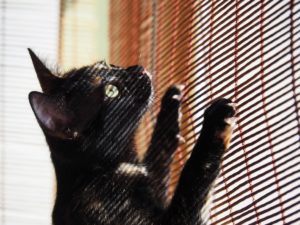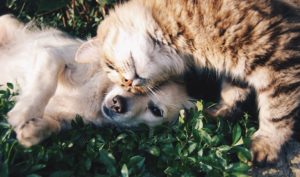6 Tips for a Smooth Transition
Any time you are combining households with animals, there is preparation to be done to make the transition as easy as possible on your pets (and everyone!).
We prepare our children for big changes, and we need to be just as aware of the impact a new house and family members will have on our animals.
 Dogs, being more mobile, have often already met the new family, and maybe even spent the night, but it’s still important to help them understand a permanent change is coming vs just a short sleepover.
Dogs, being more mobile, have often already met the new family, and maybe even spent the night, but it’s still important to help them understand a permanent change is coming vs just a short sleepover.
As I say, over and over, regularly talk, out loud, to your animals about the upcoming move. Why? Because every time you talk about it, you create pictures that help them understand what’s happening. Read more about the words you choose here.
Then start considering these 6 ideas:
1. Where is everyone sleeping?
Talk about this with your people partners before anyone moves. Some animals are quite sensitive about having their own space, while others love slumber party mode. You probably have a good idea how your animals are, so for their sake (and yours), set up living and sleeping arrangements thoughtfully. If your cat is afraid of dogs, give her a dog-free zone to rest peacefully.
Be sure to explain the living arrangements to all the animals, especially when there are new expectations, and expect them to follow the new rules. Read up on expectations here.
2. Meeting on neutral ground
When possible, have the animals meet on neutral ground the first time. This applies only to the happily mobile pets of course; don’t take a car-anxious cat or bird out just for the sake of meeting, as they will be in no position to appropriately assess their new housemates. On neutral ground the animals can meet and check each other out more thoroughly when one isn’t considered a turf intruder.
3. Getting used to the new smells
Although you always carry the scent of your animals with you, it might be a good idea to bring a full-fledged smelly blanket or toy to the other animal to check out. HOWEVER, don’t just throw it on the ground and walk away. This is, again, a time for you to fill the animal in on the upcoming situation. “Fido, this is Fluffy’s blanket that she sleeps on. Fluffy will be coming to live here in three weeks. She is an older cat and might not want to interact with you much, but she will be here and will stay here forever, so I want you to get familiar with her before she arrives.”
As often as possible, let the animal know details of the other – and NEVER say ‘bad’ things about the other, only the good qualities you want to play up in the new dynamic.
Similarly, you also tell Fluffy what is happening: “Fluffy, I took your blanket so Fido could smell it. I told him what a sweet cat you are and that you will want to spend time alone,” etc.
Talk! talk! talk! Reassure them how nice it will be to have a bigger family, and give the reasons why.
4. Special “Pet” Time
Set up “dates” on a regular basis for one-on-one time with your pets doing one of their favorite activities. It might be uninterrupted play time for 10 minutes, or maybe cuddling alone without the other intruders bullying their way in, or even grooming if it’s something your animal loves to do. This helps to show them they are still loved and recognized to have unique needs. I frequently have an animal client say “I wish it could be just us on the walk again.” Even when they all get along swimmingly, recognize their desire for connection with just you.
5. Designated Family Time
Just like individual dates, it’s also important to integrate all the animals together in common activities. If they all have different ideas of fun, then rotate but include everyone as much as possible. Playtime with my three cats rotates to include the one that loves to chase the string, the one that believes she’s a fierce bird catcher, and the one that prefers her critters to be creepy and crawly. They all join in each activity, until two of them get bored, and then it usually ends up being one-on-one time for one of the cats.
6. Consistency of the People
Sometimes the hardest part of blending families is getting all the PEOPLE on the same page! Everyone needs to agree on house rules for the animals. The animals are no dummies; they will follow the path of least resistance to get what they want, and they know who to go to to get it! (cue: dog begging at dinner table) Help everyone understand why the rules are as they are so you get buy-in. Inconsistency can lead to overall behavior issues, so stop them before they start! More information about consistency here.
Following these simple suggestions can help a move be enjoyable instead of anxious. If you look at the situation from your pets’ point of view, you’ll understand better what they’ll need to make the transition easier.
Above all else, communicate – clearly and often. The more they know, the more prepared they’ll be!
Please share this with someone you think will enjoy it!


